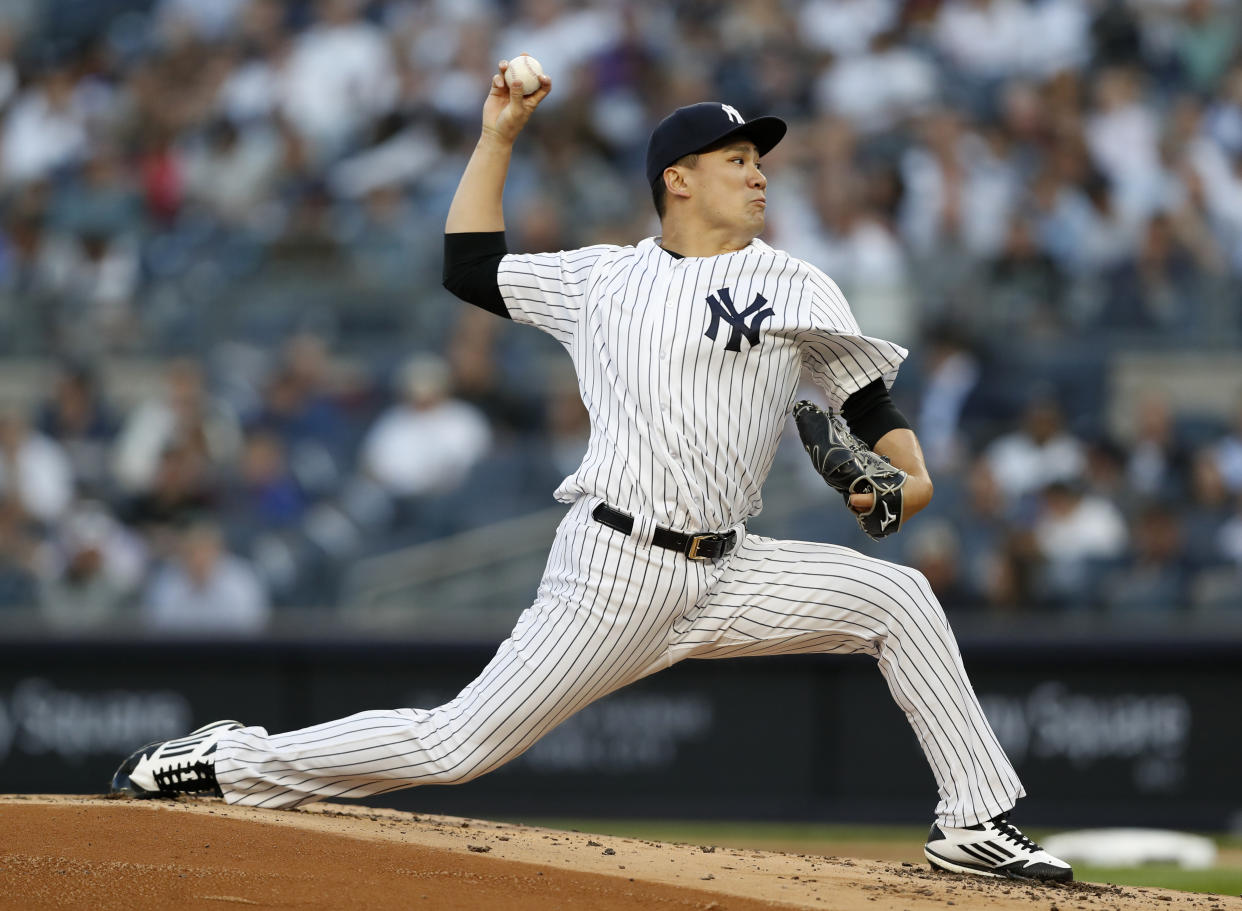Buying or selling fantasy surprises, disappointments among starting pitchers

At the quarter turn, let’s look at some of baseball’s most surprising starting pitchers on the plus and minus side of expectations and see if we can figure out how to assess them going forward.
First the pitchers who have been much better than expected.
Miles Mikolas gives us reason to believe with a league-best 1.6% walk rate (all stats are through Sunday). A walk rate this low ensures a WHIP of around 1.00, a figure Mikolas is currently beating (0.96). But the reason to fade Mikolas is a strikeout rate of 18.9% that is well below the league average. Mikolas throws hard, 94.2 mph on average. His percentage of swings that miss is also bad (15% vs. league average of 17%). Mikolas only plays as part of a plan where fantasy owners have the Ks and are looking for safety and wins elsewhere. He’s as good a bet as you can find for that strategy, say if you have a strikeout monster like Max Scherzer. But Mikolas is more of a satellite member of a fantasy staff and not a core component.
[Yahoo Fantasy Football leagues are open: Sign up now for free]
Charlie Morton’s reason to believe is a K-rate that’s sixth-best 32.3%. And this is helping to reduce his WHIP (0.97) despite his primary reason to fade: a walk rate of 8.9%. Morton also has allowed six homers in 48-plus innings. Walks and homers at this level in no way support a 2.03 ERA. Let me be clear: Morton is likely to be a valuable member of any fantasy staff going forward. But I’d be shopping Morton and those Ks around to see if I could get a top 30 hitter given I expect an ERA closer to 4.00 than 2.00 the balance of the year.
Sean Newcomb is the poor man’s Morton with more walks (22) and half as many homers (3). He gets Ks and grounders, which makes it almost impossible for opponents to string together big innings. His FIP ERA is better than Morton’s (3.08 vs. 3.44). Newcomb’s well-hit rate (0.78) seems able to sustain a low hit rate. His lack of control/command is alarming however. But it provides an easy path to being a No. 1 fantasy starter. If Newcomb can take that final, albeit biggest step and even have just league-average control, his upside is enormous.
Walker Buehler’s main selling point is super-elite velocity (95.9 mph). And his control has been much better than expected, almost a full walk per nine lower. His rate of swings that miss (15%) is below average (17%) and doesn’t support his elite Ks. But aside from that, Buehler is very much like Noah Syndergaard in his ability to harness the holy trinity of pitching power: elite velocity (95.9), strikeout rate (31.4%), ground-ball rate (54.9%). The innings are going to be a problem, as is well known, and that is going to greatly depress his trade value. But it’s actually smart to hold Buehler now and worry about replacing his innings down the road.
And those pitchers who have been worse than expected….
The reason to bail on Chris Archer is him getting pounded with a. .204 well-hit rate (average is .151). The reason to hold is 36% of baserunners scoring (league average is about 20%), which seems like terrible luck. Archer’s swinging strike rate is still well-above average. Verdict: sell at the first opportunity, like last week when he was coming off two straight good starts. A double-digit K game will also allow you to recoup about 70 cents on the draft deal — which I advise taking.
Luis Castillo just can’t finish off hitters: 71% of two-strike PAs are outs and the average is 75%. This sounds ho-hum but consider the expected OBP after two strikes is .250 and his is .290. Reason to hold: Ks are life in fantasy and the K/9 looks good. But when you factor in the batters he’s faced and see his rate is a disappointing 22.9%, down from 27.3% last year. His baserunners who score at 38%, seemingly absurdly bad/unlucky but some of this can be poor skill with baserunners on, too. He’s on waivers in a lot of leagues and I’d leave him there.
Masahiro Tanaka continues the theme with 33% of baserunners are scoring. But he works ahead of the count better than most pitchers, especially in getting ahead quickly. His hard-hit is excellent at a minuscule .085 (about half of average). Tanaka on a top offensive team with a good bullpen is the easiest call to hold/buy low. But there’s a 40% chance he’s just the new Michael Pineda and someone who is doomed to disappoint in ERA. The reason is the same — homers (8 allowed so far). But if he’s so easy to square up, why is the well-hit so low?
Other than the common thread of 30% baserunners scoring, the only knock on Jose Berrios is off-speed effectiveness. This suggests he may be tipping his pitches. His well hit is just .091. But swings that miss is only about average (18% vs. MLB 17%). You have to like 51% of his completed innings being 1-2-3, where the average rate is just 37%. That’s extra innings and a greater chance at wins. I’m all-in on Berrios the rest of the year. He reminds me very much of the young David Cone.




